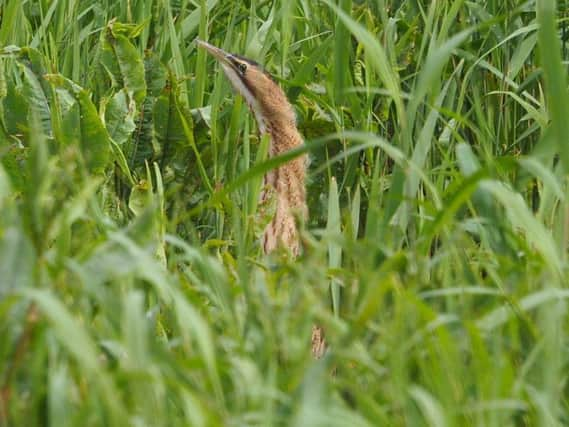Joy as rare birds hatched in Lancashire


After an absence of breeding for almost a decade a pair of bitterns has produced three chicks at RSPB Leighton Moss, in Silverdale.
The elusive birds first nested at the north Lancashire reserve in 2018 as a result of a four-year programme to rejuvenate the wetlands.
Advertisement
Hide AdAdvertisement
Hide AdA relative of the more familiar grey heron, bitterns rely on reedbeds to live in - a now rare habitat in the UK, with Leighton Moss being the largest one in North West England.
Jarrod Sneyd, site manager at Leighton Moss said: “Leighton Moss has always been synonymous with bitterns but they stopped breeding here ten years ago. The reasons why are complex. Leighton Moss is an old reedbed, having formed after the First World War and aging reedbed tends to be quite dry.
“Bitterns like young, wet reedbeds where they can catch fish, so RSPB staff and volunteers spend a lot of time managing the site in a way that halts its aging process and creates the conditions that bitterns and lots of other wildlife need to thrive.”
In the late 1990s, bitterns were almost wiped out in the UK, due to the loss of the reedbed habitat on which they depend. At that time Leighton Moss was one of only a few sites in the country where bitterns were clinging on with just 11 male bitterns left, with three of those at Leighton Moss and the majority of the others in East Anglia.
Advertisement
Hide AdAdvertisement
Hide AdSince then, the RSPB and other nature conservation organisations have been working hard to save the species and it has been successful, with 188 males recorded in the UK in 2018.
Bittern populations are monitored by recording the number of ‘booming’ males. Booming is the unusual song of the male birds, a deep sound similar to blowing over the top of a glass bottle. When fully booming, a male can be heard for several kilometres.
Jarrod added: “We had a booming male over the last decade, but he would fail to work up to a full boom or stop early in the season and there was no sign of any breeding females until 2018. Following last year’s success, we were excited to hear a male booming again in the reedbed this spring.
"Our dedicated team of wardens and volunteers have spent hours listening for booming and then monitoring the movements of a female which was seen regularly going in and out of the same spot on the reserve – a sign that she was taking food into a nest for her chicks. We were absolutely thrilled to see three healthy young bitterns near the nest last week.”
Visitors to the site may be able to catch sight of the bitterns from either the lower or causeway hides.